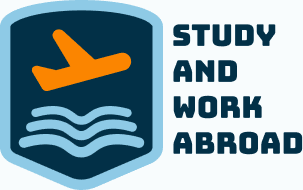Call Us:+91-9920234749, +91-9833420909 info@studyandworkabroad.in

Best Courses for Permanent Residency (PR) in Canada, UK, and New Zealand in 2025–2026
In today’s globalized world, studying abroad is no longer just about earning an international degree—it’s about building a future. Thousands of Indian students now aim to not only study in Canada, the UK, or New Zealand, but also to gain permanent residency (PR) in these countries after completing their education. Choosing the right course plays a crucial role in shaping this journey.
With immigration policies becoming more structured and skill-focused in 2025–2026, selecting a program aligned with a country’s labour market needs can significantly enhance your chances of settling permanently. Whether it’s Canada’s points-based Express Entry system, the UK’s Skilled Worker route, or New Zealand’s Green List occupations, international graduates in high-demand sectors often enjoy faster PR processing, job security, and better career prospects.
This blog is your go-to guide for understanding which courses offer the best chance of obtaining PR in these top study destinations. We’ll explore the in-demand programs, university options, and immigration pathways for international students aiming to study and settle in these countries. So, if you’re planning to study in Canada, study in the UK, or study in New Zealand, read on to discover how to align your academic choices with your long-term PR goals.
Canada: Top Courses Leading to PR
Canada’s immigration system favors international graduates, particularly those in sectors facing skill shortages. The Express Entry system and Provincial Nominee Programs (PNPs) prioritize applicants with Canadian education and work experience.
1. Healthcare & Nursing
With an aging population, Canada has a growing demand for healthcare professionals.
- Popular Courses: Practical Nursing, Healthcare Assistant, Medical Laboratory Technician
- Average Salary: CAD $60,000–$90,000/year
- PR Advantage: Strong support across provinces like Ontario and British Columbia
2. Information Technology (IT)
The tech sector in Canada is booming, leading to high demand for IT professionals.
- Popular Courses: Cybersecurity, Data Analytics, Cloud Computing, Software Engineering
- Average Salary: CAD $70,000–$110,000/year
- Top Institutions: University of Niagara Falls Canada, Trent University, Toronto Metropolitan University
3. Engineering
Engineers are essential for Canada’s infrastructure and development projects.
- Specializations: Civil, Mechanical, Electrical, Software Engineering
- Average Salary: CAD $80,000–$130,000/year
4. Business & Finance
Business professionals are vital for Canada’s economic growth.
- Courses: Business Administration, Accounting, Finance
- Average Salary: CAD $70,000–$200,000/year
5. Skilled Trades & Vocational Programs
Skilled trades are in high demand across Canada.
- Courses: Electrician Training, Plumbing, Welding, HVAC Technician
- Average Salary: CAD $70,000–$140,000/year
Immigration Outlook
Canada plans to admit 395,000 new permanent residents in 2025, with a focus on economic immigrants.
United Kingdom: Courses Enhancing PR Prospects
The UK’s Shortage Occupation List identifies professions with labor shortages, offering easier PR pathways for graduates in these fields.
1. Medicine, Healthcare and Social Work
Healthcare professionals are consistently in demand.
- Courses: Medicine, Nursing, Physiotherapy, Nutrition, Social Work
- Starting Salary: GBP £22,000–£45,000
- Employment Rate: 95%–99%
2. Engineering
Engineers play a crucial role in the UK’s infrastructure.
- Specializations: Mechanical, Civil, Electrical Engineering
- Starting Salary: GBP £25,000
- Employment Rate: 92%
3. Information Technology (IT)
The digital sector is expanding rapidly in the UK.
- Courses: Computer Science, Cybersecurity, Data Science
- Average Salary: GBP £30,000–£70,000
4. Education
Teachers, especially in STEM subjects, are in high demand.
- Courses: Education, Teaching, Special Education
- PR Advantage: Inclusion in the Shortage Occupation List
5. Architecture
Architects are needed for urban development projects.
- Courses: Architecture, Urban Planning
- PR Advantage: Listed in shortage occupations
Post-Study Work Opportunities
Graduates can apply for a Graduate Route visa, allowing them to work in the UK for up to two years post-study, providing a pathway to PR.
New Zealand: Courses Leading to PR
New Zealand’s Green List identifies occupations with labor shortages, offering streamlined PR pathways for professionals in these fields.
1. Information Technology (IT)
The tech industry in New Zealand is expanding.
- Courses: Software Development, Data Science, Cybersecurity
- PR Advantage: Many IT roles are on the Green List
2. Engineering
Engineers are essential for infrastructure projects.
- Specializations: Civil, Mechanical, Electrical Engineering
- PR Advantage: High demand across sectors
3. Healthcare & Nursing
Healthcare professionals are in short supply.
- Courses: Nursing, Medical Technology, Healthcare Management
- PR Advantage: Listed on the Green List
4. Education & Teaching
Teachers are needed in various educational settings.
- Courses: Education, Early Childhood Teaching
- PR Advantage: Inclusion in the Green List
5. Automotive & Trades
Skilled tradespeople are in demand.
- Courses: Automotive Engineering, Electrical Trades
- PR Advantage: Listed in shortage occupations
Pathways to PR
Graduates can transition from a student visa to a work visa, and eventually apply for PR through the Skilled Migrant Category or Green List pathways.
Conclusion
Choosing the right course in a country with favorable immigration policies can significantly enhance your chances of obtaining Permanent Residency. Canada, the UK, and New Zealand offer various programs aligned with labor market needs, providing international students with opportunities to build successful careers and settle permanently.
FAQs
Q1: Which country offers the easiest PR pathway after study?
Canada is often considered to have one of the most straightforward PR processes for international students, especially through programs like Express Entry and PNPs.
Q2: How long does it take to get PR after studying in these countries?
- Canada: Typically 1–2 years post-study, depending on the program and work experience.
- UK: After 5 years of work, one can apply for Indefinite Leave to Remain (ILR).
- New Zealand: Usually 2–3 years, depending on the visa pathway and occupation.
Q3: Do these countries offer post-study work visas?
Yes, all three countries provide post-study work opportunities, allowing graduates to gain work experience and transition to PR.
Q4: Are there language requirements for PR?
Yes, proficiency in English is required, often demonstrated through tests like IELTS or TOEFL.
Q5: Can I apply for PR without a job offer?
In Canada and New Zealand, having a job offer can enhance your PR application but isn’t always mandatory. In the UK, a job offer is typically required for PR pathways.



